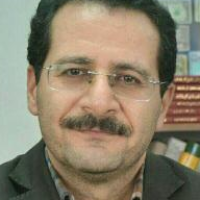Pro-Poor Growth in Urban Areas of Iran (Approach to Determining Policy Centers Based on Categories of Activities and Occupational Groups)
The main goals of this article are to measure pro-poor growth in urban areas of Iran using the Chanona (2020) matrix and to rank the categories of activities and occupational groups in urban areas of Iran based on poverty growth using the Euclidean TOPSIS technique. For this purpose, cost and income data of urban households in Iran during the period 2013-2019 has been used. The results show that during the period under review, only the period of 2016-2017, both growth and income distribution have reduced poverty and the growth has been pro-poor. However, in the period of 2015-2016, poverty has increased and growth has been Immiserizing. In other years, the Chanona index has shown an increase in poverty. The results of the TOPSIS model also show that among the categories of activities "financial and insurance activities" and among the occupational groups; The "Administrative and Office Staff" group ranks first in poverty alleviation. Therefore, to reduce poverty, it is recommended to pay attention to income growth and redistribution in economic planning and policy-making. Because paying attention only to growth such as the period 2015-2016 can increase poverty in Iran. In addition, although the improvement in income distribution can be such that poverty is reduced even in the absence of growth; But in other one-year periods examined, it can be seen that the lack of attention to growth has led to an increase in poverty in Iran and reduce in inequality alone cannot lead to a reduction in poverty
-
The N-shaped Environmental Kuznets Curve: Evidences of Developing and Developed Countries
Somayeh Azami *, Hamid Rahmani,
Journal of Economic Growth and Development Research, -
The Effect of Economic and Social Factors on Housing Poverty in Iran
Azade Shahab, *,
Quarterly Journal of Applied Theories of Economics, -
Evaluating the power of capital deepening and the effect of elasticity of substitution of production factors on the employment capacity in Iran's manufacturing industries.
Hamid Shirazi, MohammadSharif Karimi *, Ali Falahati
Quarterly Journal of Economic Modelling, -
Estimation of the Share of between-group Inequality in Total Inequality (Based on Occupational Groups in Iran)
*, Shoaib Moradi Deh Cheraghi
Journal of Public sector economics studies, -
Ranking of Iranian metropolises based on urban smartness index
Somayeh Ghiasy, *, Mohammadsharif Karimi
Journal of Urban Economics,




